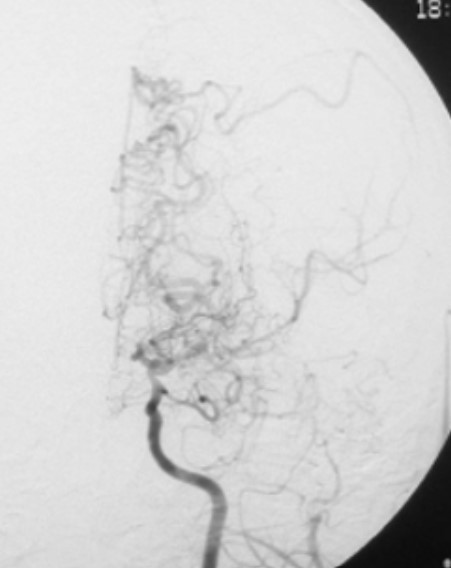There is a cerebrovascular disorder named after the Japanese onomatopoeia called moyamoya disease. It is rare in whites and blacks, and is common in yellow races including Japanese, and a Japanese doctor announced it for the first time in the world.I contributed to the October 10, 2012 issue of Brain published by the Japan Neuroscience Foundation, so I will transcribe that sentence.
Symptoms and treatment of moyamoya disease
Moyamoya disease is a rare disease named after a Japanese onomatopoeia.Moyamoya disease is one of the diseases with Japanese names.It is a rare cerebrovascular disease that causes cerebral infarction, cerebral hemorrhage, and convulsions, and is often seen around the ages of 5 and 40.Japan has long had a culture different from that of the United States and Europe, and it is sometimes difficult to express Japanese culture in English. There are too many examples to enumerate. However, in medicine, Japanese medical terms are rarely used around the world due to factors such as the unilateral introduction of Western medicine to Japan from the Meiji period. Although there are examples of common Japanese diseases with Japanese names (Hashimoto disease, Kawasaki disease, etc.), Japanese nouns are rarely used as disease names, and moyamoya disease is a rare disease name. Moyamoya disease is a disease in which thick blood vessels in the brain gradually narrow over years, causing cerebral infarction, intracerebral hemorrhage, and convulsions. About 15% are inherited from parent to child, and the rest have no known cause. While it is getting thinner, the originally thin arteries of the brain are forced to become thicker, and an angiography will make it look hazy. 
This disease is common in Asians, including Japanese, and the Japanese doctor who first reported this disease in English named it moyamoya disease (1969), after which the name spread throughout the world. Sometimes it looks like "mojamoja" or "mokumoku" instead of "moyamoya", but I think the onomatopoeia "moyamoya" is the most fitting, so it was a good name to think about now. It is said that 0.3-0.5 out of every 100,000 people develop this new disease in a year.Moyamoya disease often occurs between the ages of 5 and 30 to 40, with cerebral infarction in children and cerebral hemorrhage in adults. Children with moyamoya disease may be diagnosed with symptoms such as convulsions and inability to move their limbs from kindergarten to elementary school. Convulsions are often seen when you breathe fast, and it is said that you may have a convulsion when you blow on your breath to cool down hot ramen and eat it. It's not bad per se, it's triggered by faster breathing. When there is too much oxygen in the blood, a poison called active oxygen is generated, so the body constricts the blood vessels so that the oxygen concentration does not rise too much. In patients with moyamoya disease, the blood vessels in the brain are originally narrow, but when rapid breathing narrows the blood vessels, convulsions occur.Treatment for moyamoya disease includes medication and surgery. Medicines include anticonvulsants to suppress convulsions and antiplatelet agents to prevent cerebral infarction. Surgery directly increases blood flow to the brain by connecting narrowed blood vessels to other blood vessels running under the skin (bypass surgery). In addition, it is known that blood vessels enter the brain from muscle and skin in about half a year just by placing muscle and skin blood vessels on the surface of the brain (this method is not effective if the blood vessels in the brain become narrow due to arteriosclerosis). ).Moyamoya disease can be easily diagnosed by MRI of the brain, so if you are concerned about it, please get an MRI. If you have been diagnosed with moyamoya disease and have previously experienced symptoms such as paralysis, you should actively consider preventing recurrence. We recommend that you visit a hospital with a neurosurgeon that can perform bypass surgery.
Cerebral angiography images of moyamoya disease are characterized by narrowing of the arteries and a cloudy collection of blood vessels.

Snowboading head injury
coffee intake prevent silent cerebral infarction
Stroke:general information
treatment of intracerebral hemorrhage
treatment of subarachoid hemorrhage
carotid endoarterectomy
STA-MCA anastomosis
Moyamoya disease
arterio-venous malformation: AVM
MRI T2* WI
Tumor removal part 1 : FLAIR
Tumor removal part 2: navigation and monitoring
Tumor removal part 3 : approach through sulci
Tumor removal part 4 : MIB-1 labeling index



 HOME
HOME HOME JAPANESE
HOME JAPANESE Self Introduction
Self Introduction Paper/Presentation
Paper/Presentation